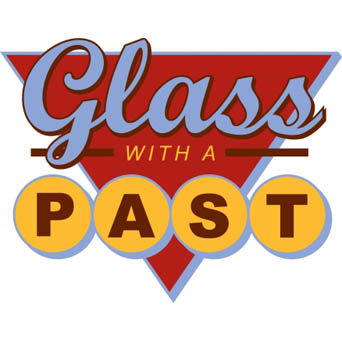Very rarely I get a batch of window glass that has hard water deposits on it. Most people throw this glass away because it appears useless (and is often the impetus for window replacement.) BUT, there are some pretty cool things that can happen with hard water deposits on glass that can be used in recycled glass art.
Here are some fabulous dishes as an example. I cleaned the glass really well, then wiped the hard water deposit side down with a dilute vinegar mix and fused with the hard water sides together.

What I got was a myriad of tiny, tiny bubbles embedded between the layers of glass. The outside surface of the dishes is perfectly glassy.
Here is another example of using the hard water deposit as a design feature:
This vessel was created by cutting two circles from the same sheet of recycled window glass. The hard water deposits were centered on one side, so I had a clear circle and a minerally circle. I washed the mineral side very well, sprayed on a dilute vinegar solution and then used a flat x-acto knife blade to scrape stripes through the hard water deposits. This is a little bit like scraping stubborn frost off a windshield. When the scraped stripes were clear of mineral deposits, I cleaned it again, stacked the two circles, mineral side in and fused. The scraped stripes fused clear, with the hard water deposit in between creating millions of tiny bubbles.

Here is an example of another vessel where I cut multiple pie shaped pieces with hard water deposits and then stacked them during fusing for differing levels of opacity:

And another with the glass cut into moon shapes and stacked into spirals to create different mineral layers.

And a close up of all the tiny, tiny, bubbles!

Sometimes with a bit of testing and some open minded experimenting, you can find a new and exciting way forward. Often when I’m feeling stuck, I just throw a test in the kiln to see what happens, sometimes the AHA is a pretty exciting one!
Related tutorials:
